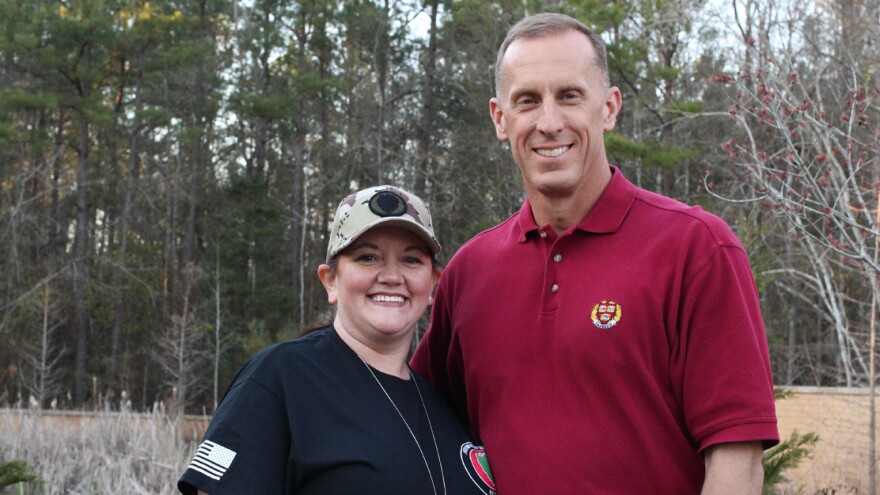Some accidents have deadly consequences. And sometimes it's the thing you didn't do — didn't say, didn't see — that leaves you with the most guilt.
For 25 years, retired Army Col. David Taylor has carried feelings of guilt over the death of one of the soldiers in a maneuver he was leading.

In 1991, during one of the final battles of the Gulf War, Army Spc. Andy Alaniz was killed by friendly fire in Iraq. A U.S. tank unit fired rounds at the group of vehicles Alaniz was in, mistaking them for the enemy. He was one of 35 Americans killed by friendly fire in the war.
Less than 24 hours later President George H.W. Bush declared victory in a nationally-televised address.
"Most of us, in our unit, had been fighting for over three and a half days with no sleep and some pretty horrible weather conditions," Taylor tells Alaniz's widow, Catherine Alaniz-Simonds at a visit with StoryCorps. "And I remember the brigade commander said, 'I need to know if anybody has any concerns.' I saw there's potential that there would be friendly fire. And I could have said something and I didn't."
That decision has wracked him with guilt for decades. "For the last 25 years, every day I thought about it. I feel that this whole thing could have been prevented," he tells her.
Alaniz-Simonds and Alaniz were married just a few months before he deployed. At the time of Alaniz's death, she was 19 and six months pregnant with their first child. The baby was named Andee, after her father.
For the 25th anniversary of the war's cease-fire, Gulf War veterans met earlier this year at Fort Stewart, Ga. Taylor came to the reunion — and to StoryCorps — at Alaniz-Simonds' request.
The two had met for the first time only the day before. Alaniz-Simonds was the one who reached out, but it was Taylor who says he gained the most from them finally speaking.
"Now that I met you, I feel whole," he tells Alaniz-Simonds. "I can live my life now. And without doing this there would still be an emptiness in me."

Alaniz-Simonds says she doesn't hold Taylor responsible for her husband's death. "You know, mistakes were made, things happen, but I've never blamed you," she tells Taylor. "I don't think it's your place to carry that burden any longer. Andy would not want that, that's not how he was."
And 25 years later, her main concern is to make sure that Alaniz's memory lives on.
"I thought I was the only one that remembered him," Alaniz-Simonds tells Taylor. "That's my biggest fear, is that as time goes on people will forget."
"I'll never let that happen," Taylor says. "That event changed my life. And so there's two of us, we'll make sure he's not forgotten."
Audio produced for by John White and Alletta Cooper.
StoryCorps is a national nonprofit that gives people the chance to interview friends and loved ones about their lives. These conversations are archived at the American Folklife Center at the Library of Congress, allowing participants to leave a legacy for future generations. Learn more, including how to interview someone in your life, at .
Copyright 2023 NPR. To see more, visit https://www.npr.org.







